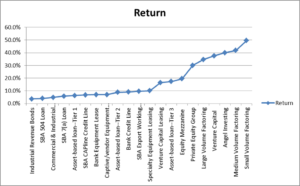I recently attended a weekend event for business owners at Semiahmoo. I was one of the sponsors of the event and made a presentation on Private Capital Markets. Much of the academic support for the presentation came from ‘Private Capital Markets’ by Robert Slee. This book is the foremost piece of scholarship on the topic.
Slee’s premise is that the private capital markets are fundamentally different from the public markets. Most academic research is done on the public markets. All universities teach Finance courses based on the public markets. And out in the real world, public market information is used with adjustments applied to the private markets. Slee contends that this is the wrong approach and I tend to agree with him.
As a practical matter, undercapitalization is a very common business problem, so finding more capital is often a concern. Capital comes in two basic types, debt and equity. Debt is almost always cheaper but carries a downside risk.
Another common mistake made by business owners is not matching the maturity of the debt and the collateral securing that debt. This is typified by businesses that use a revolving line of credit to purchase fixed assets or make an acquisition of another business. When this is done, usually the line of credit is tied up and not available when needed for its real purpose—short-term cash shortfalls. Term debt is a better match of maturities for fixed assets or a business acquisition.
Private Capital Yield Curve
The private capital yield curve shown below, comes from Slee’s book. I’ve created my own Excel chart but the concept and the rates are from Slee’s book. The idea here is that the yield (rate of return) required by the providers of capital goes up as the risk these providers perceive goes up. The arrangement of the chart starts on the left with the sources of capital with the lowest rates and ramps up while moving to the right and to riskier forms of capital.
Industrial revenue bonds are rare but very inexpensive. For most businesses, banks provide the cheapest form of capital. Moving to the right, ABLs (asset-based lenders) come next with leasing companies, angel investors, venture capitalists and factoring companies getting progressively more expensive. Not all options will be available for all businesses. In fact, most won’t be available to most small businesses. But it is good to be aware that there are many potential options available. Albeit, at a price.
So what is the optimal capital structure for a small business? A business school Finance course can teach you how to calculate this. But I’d suggest a more practical and simple approach. First, borrow all you can from banks. They are cheap sources of capital. Make sure you finance all long-term assets with debt of appropriate maturity. That is, do maturity matching. Second, consider your appetite for risk. Taking money from others, be it bank debt or investor funds, is serious business. Don’t take that responsibility lightly. The money must be paid back. Third, don’t rule out expensive forms of borrowing. If there is enough profit in the deal, maybe expensive capital makes sense. This is especially true if the debt will be outstanding for only a short period of time. Finally, think creatively and try to find ways to do things that require less capital.


No comments yet.